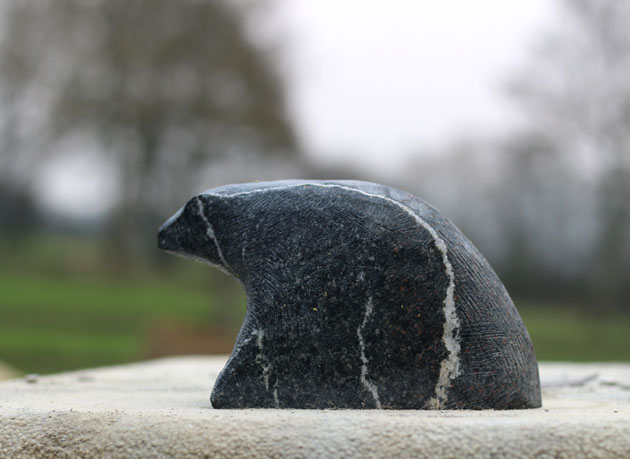Bear thoughts

As I carve and the bear shape sculpture emerges I’m thinking about the Medieval Bestiary and the bear illustrations in manuscripts, and how different my idea of bear and how I would like it to look, is.
The Bestiary describes that their general attributes include eating honey, but can only eat the apples of the mandrake if they also eat ants. If injured a bear can heal itself by touching the herb phlome or mullein.
Pliny the Elder’s influence is clear, as the author of Natural Histories – an encyclopedic work of uneven accuracies, but which was an authority on scientific matters up to the Middle Ages. He says:
Bears mate at the beginning of winter, after which the male and female retire to separate caves. The cubs are born thirty days later. In the winter, male bears remain in hiding for forty days and females for four months; during the time they do not eat or drink, and for the first fourteen days are so soundly asleep that not even wounds can wake them. When they emerge from their caves they eat an herb to loosen their bowels and rub their teeth on tree stumps to get their mouths ready. To cure the dimness of their eyes they go to beehives and allow the bees to sting their faces. A bear’s weakest part is the head, some say the brains of bears contain a poison that if drunk drives a man bear-mad. The breath of bears is pestilential, no wild animal will touch anything a bear has breathed on, and things so tainted quickly go bad.
Back to my bear shape – I’m very pleased with the colouring in this stone and how it lends a wildness and nature made influence to how the form is seen.
